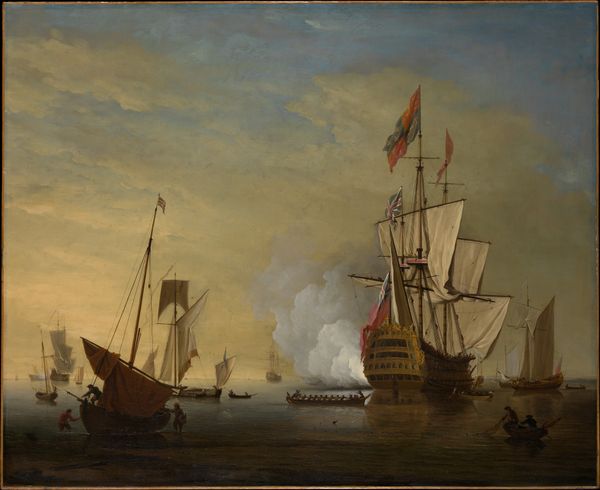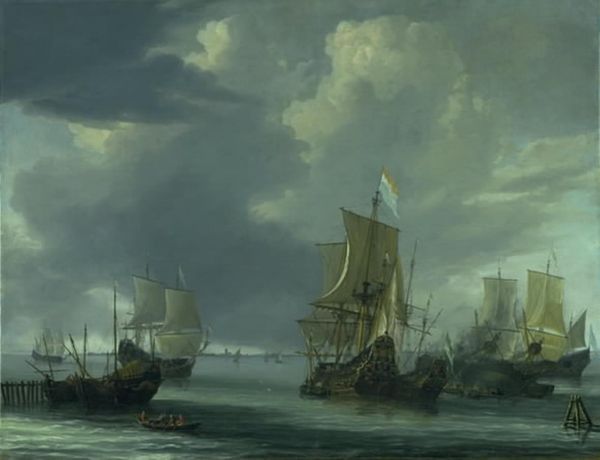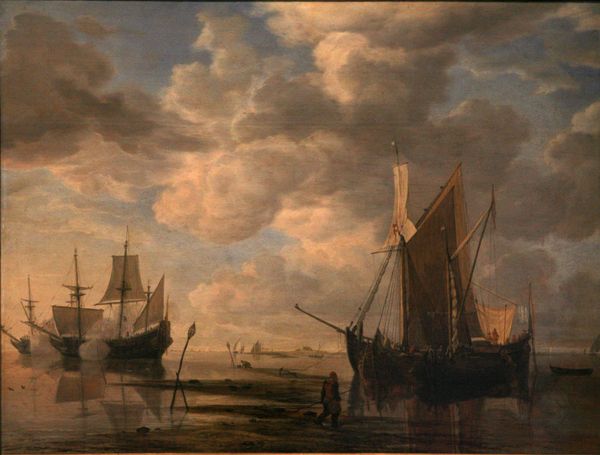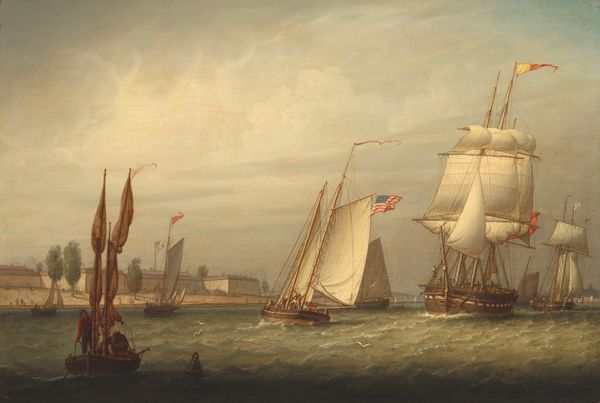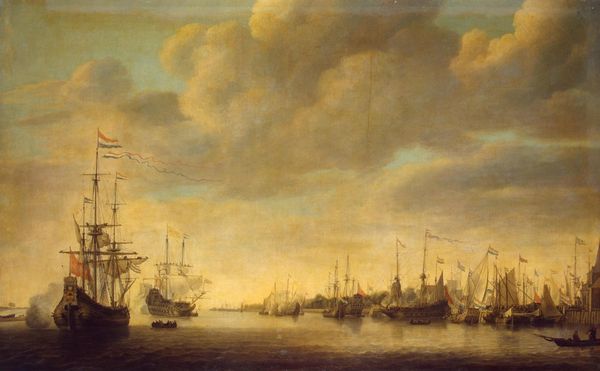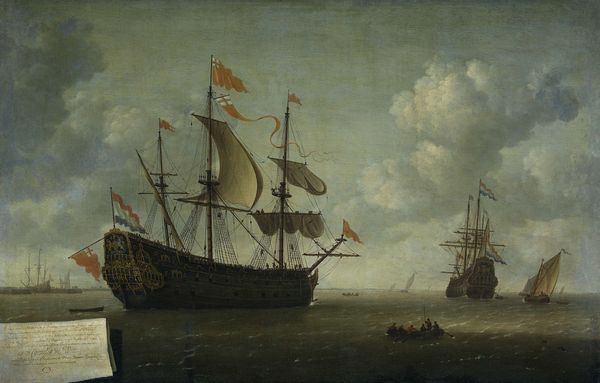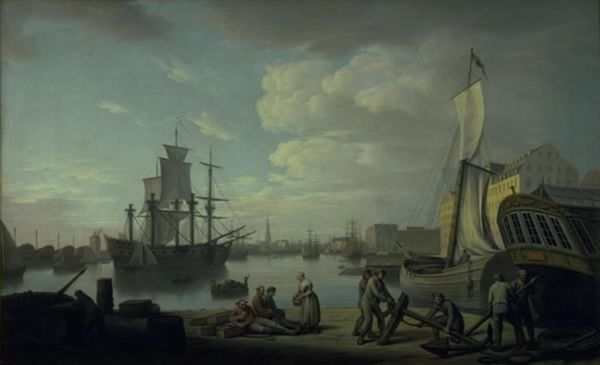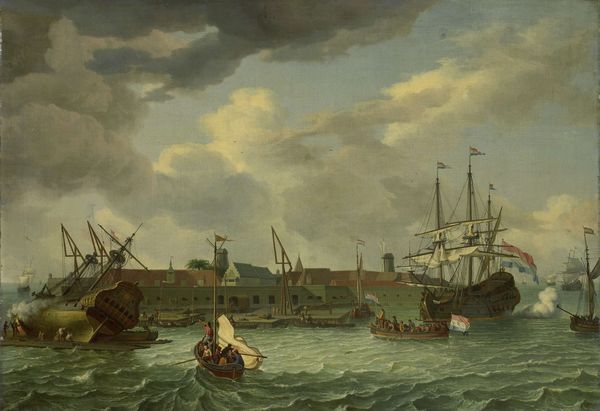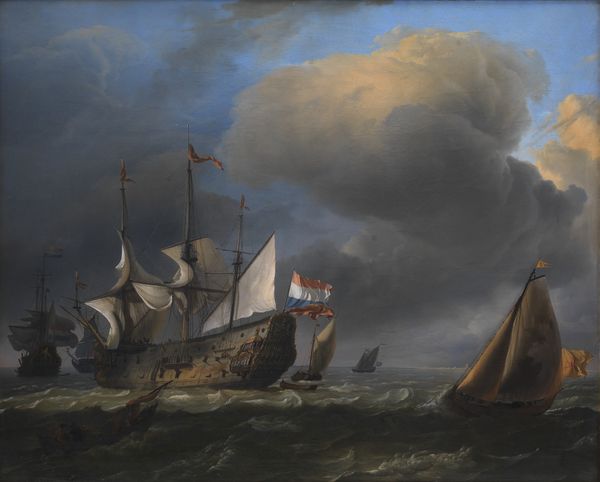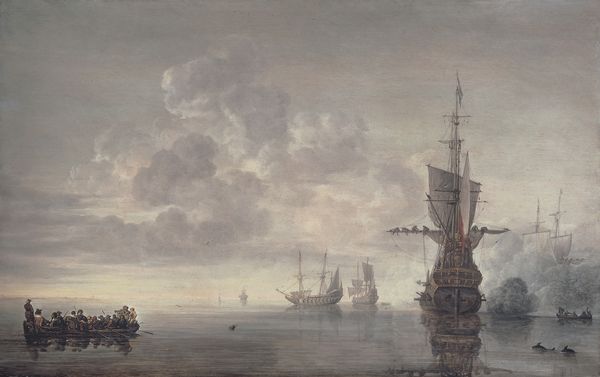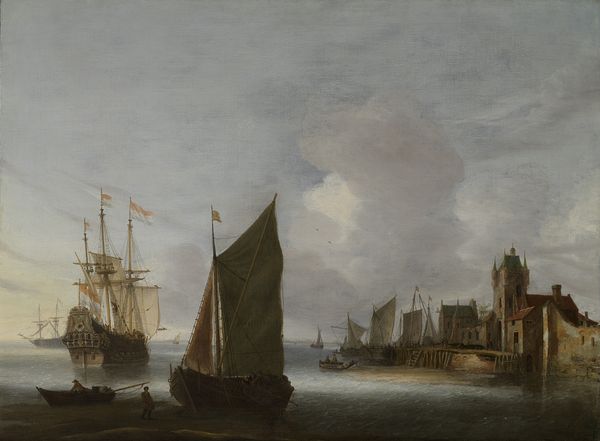
Dimensions: support: 1022 x 1480 mm frame: 1193 x 1660 x 105 mm
Copyright: CC-BY-NC-ND 4.0 DEED, Photo: Tate
Curator: Charles Brooking, a leading British marine painter of the 18th century, likely painted this canvas, entitled "A British Man of War Firing a Salute." Editor: The vastness of the sky and sea really strikes me, lending a certain melancholy grandeur to the scene. Curator: Indeed. Maritime paintings in this era served as powerful displays of Britain's naval strength and mercantile power. The firing of a salute was not just a formal greeting but also a carefully orchestrated performance of dominance. Editor: It's interesting to consider the psychological impact these images would have had, shaping perceptions of power and security through potent symbolism. The ships themselves become emblems of national identity. Curator: Absolutely. Brooking’s work can be examined through the lens of postcolonial studies, understanding how naval prowess shaped Britain's global identity and its relationship with other nations. Editor: Considering it all, the painting becomes more than a depiction of ships; it’s a visual assertion of dominance during an era of immense global upheaval. Curator: I agree. It's a complex interplay of aesthetics, politics, and the performance of power.
Comments
tate 7 months ago
⋮
http://www.tate.org.uk/art/artworks/brooking-a-british-man-of-war-firing-a-salute-t00115
Join the conversation
Join millions of artists and users on Artera today and experience the ultimate creative platform.
tate 7 months ago
⋮
British marine painting developed at the end of the 17th century in response to Britain’s mercantile and imperial expansion. Brooking was a major figure in this development. Unlike many of his contemporaries, he preferred generalised depictions of different types of ship, rather than documentary representations of particular places or events. This scene may, therefore, be imagined rather than actual. It was said that Brooking ‘had been much to sea’. This is reflected in his obvious knowledge of sailing in different weather conditions, and of the details of ships, sails and rigging. Gallery label, February 2016
